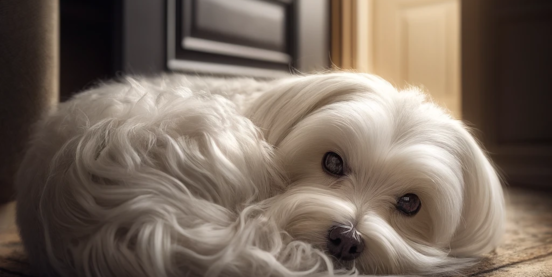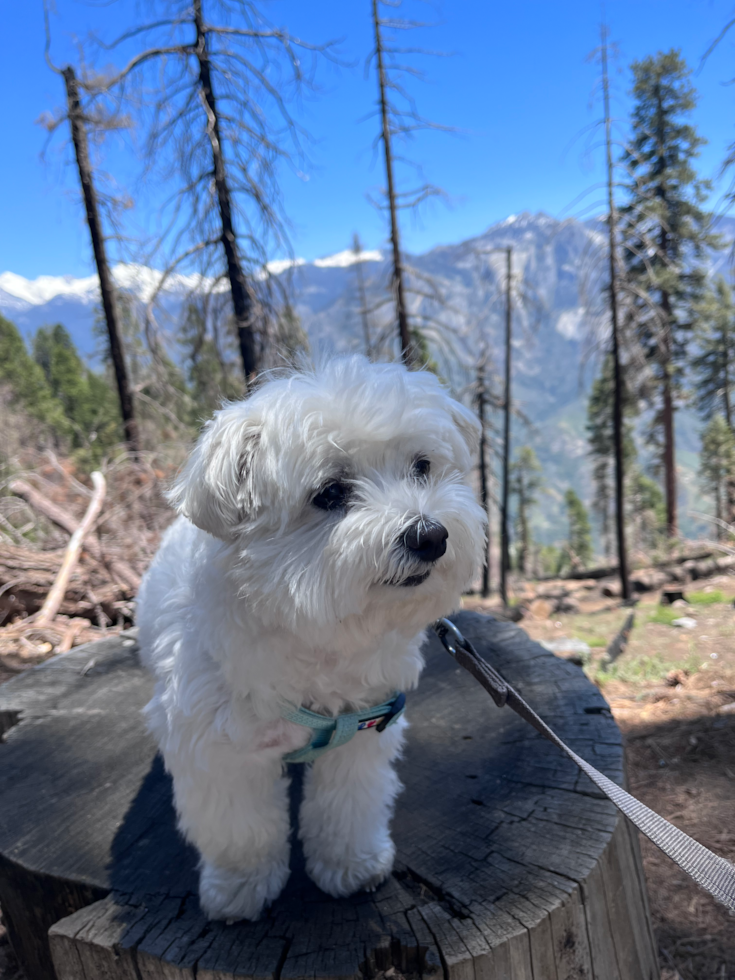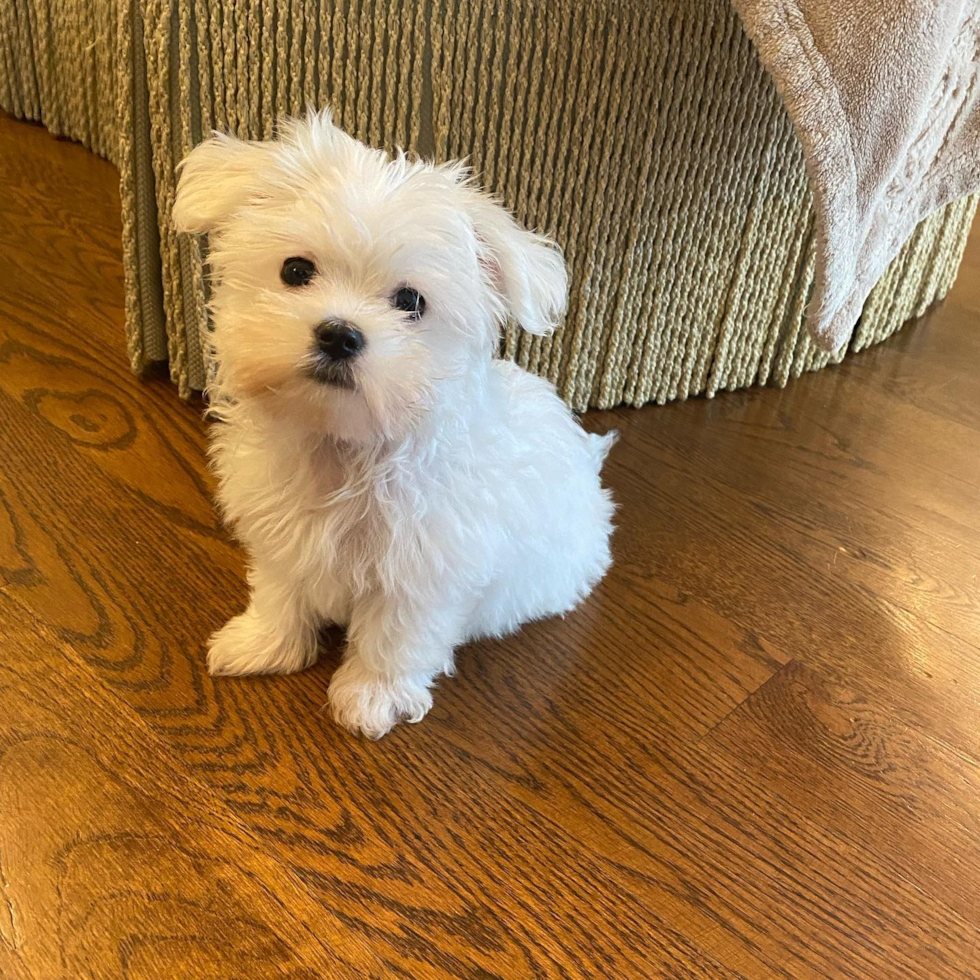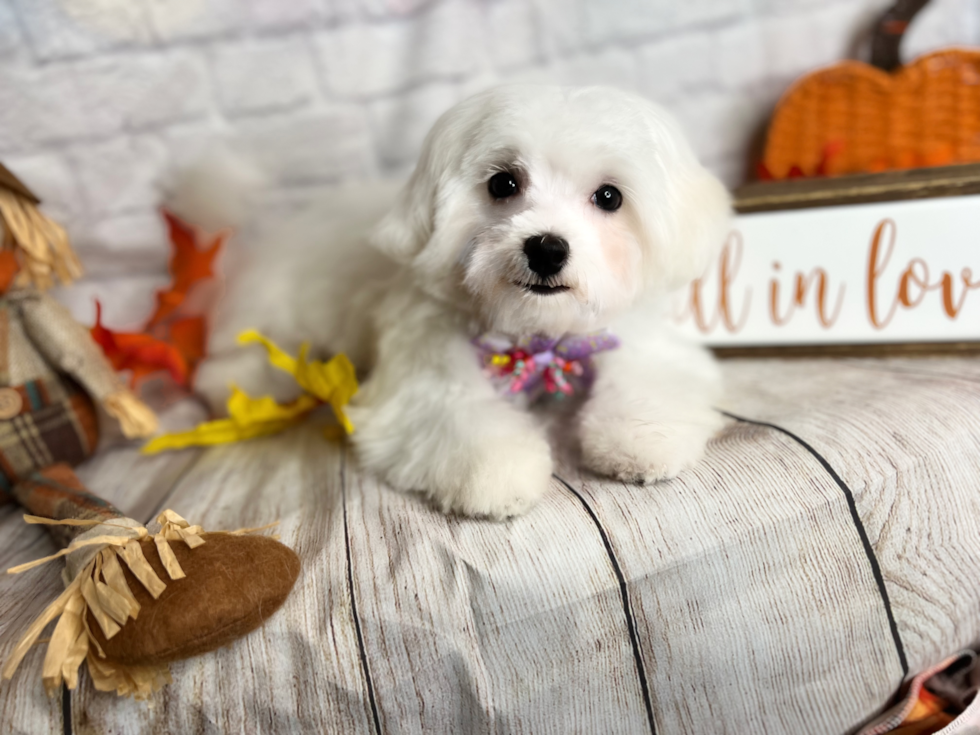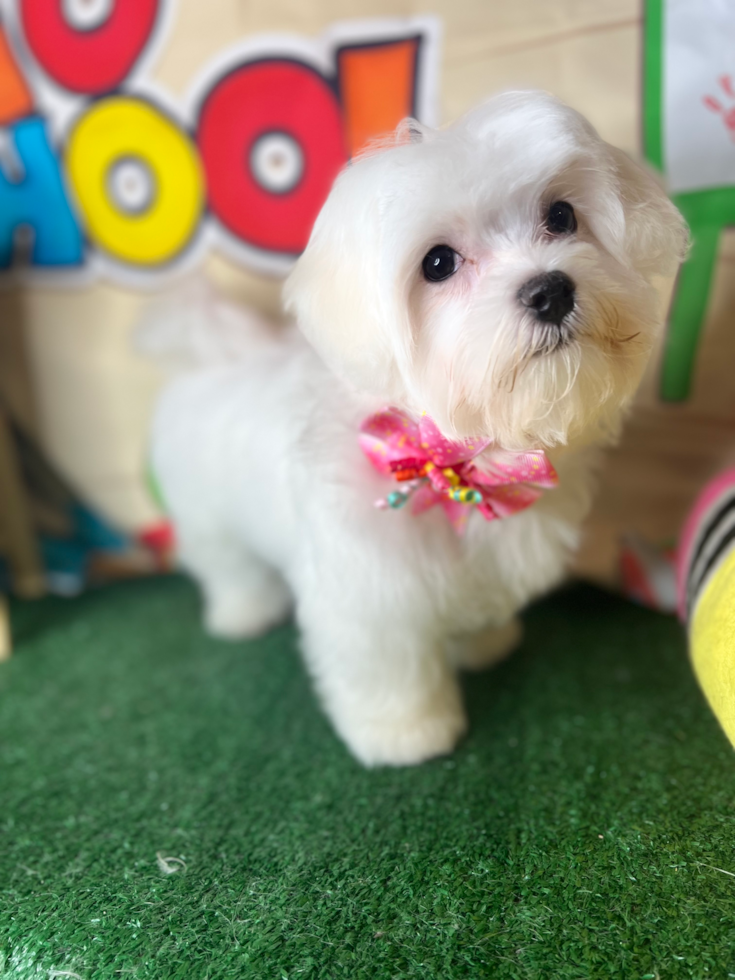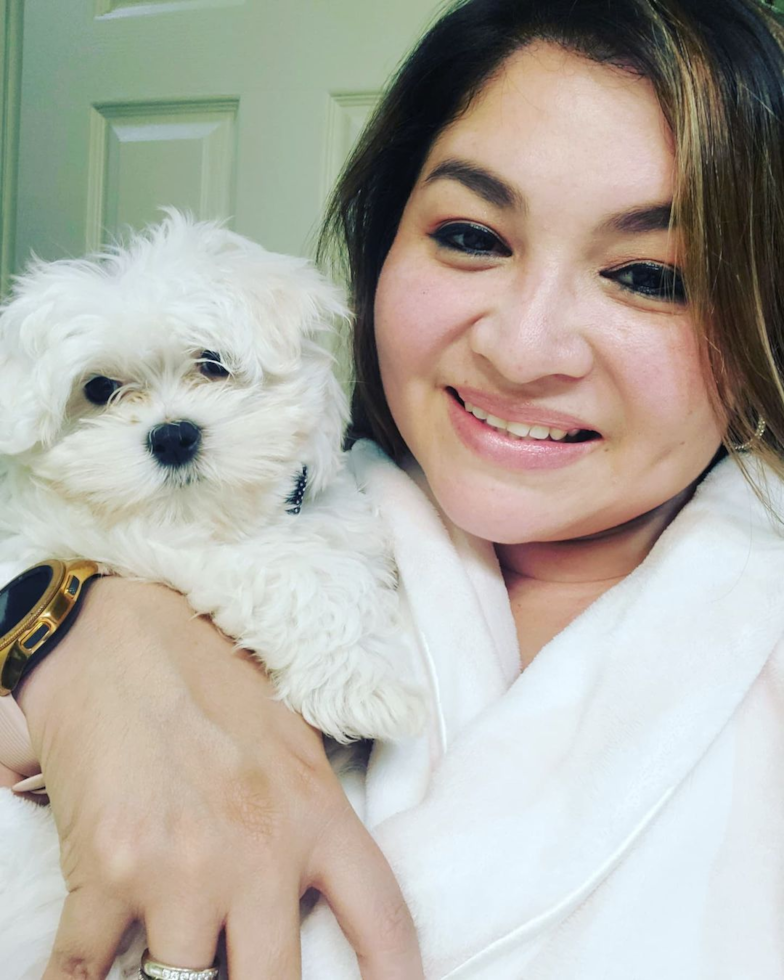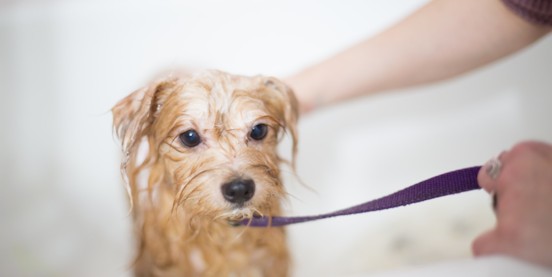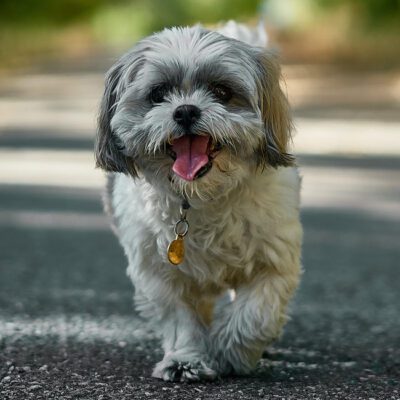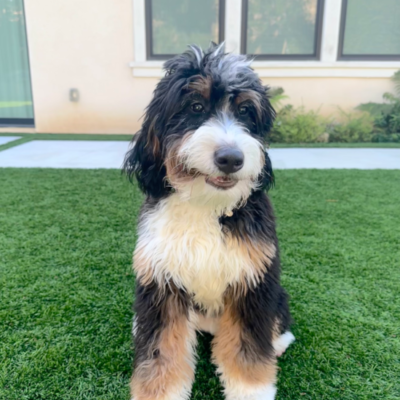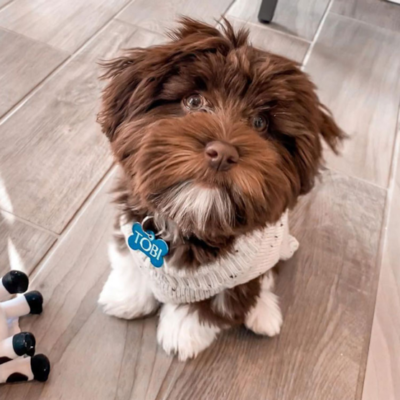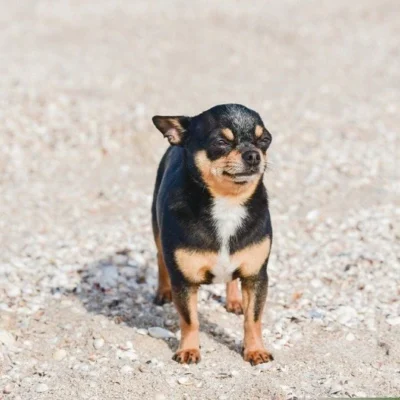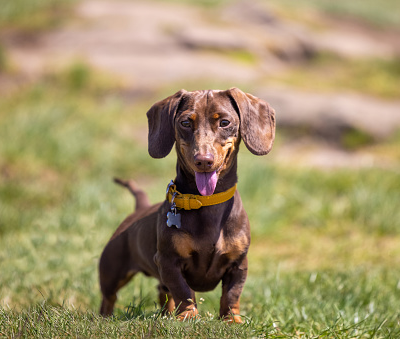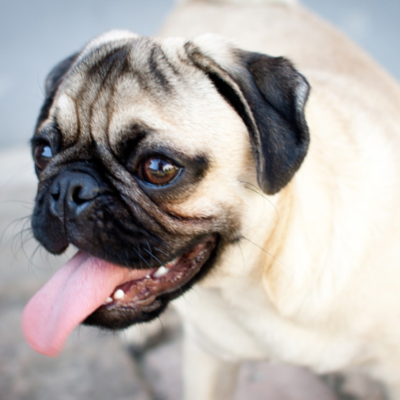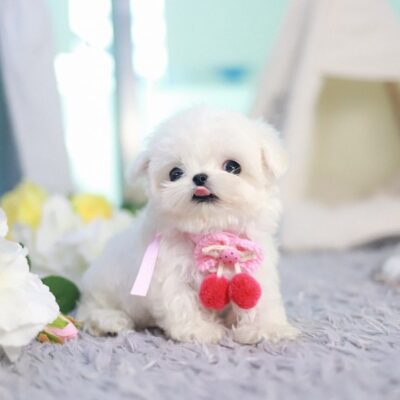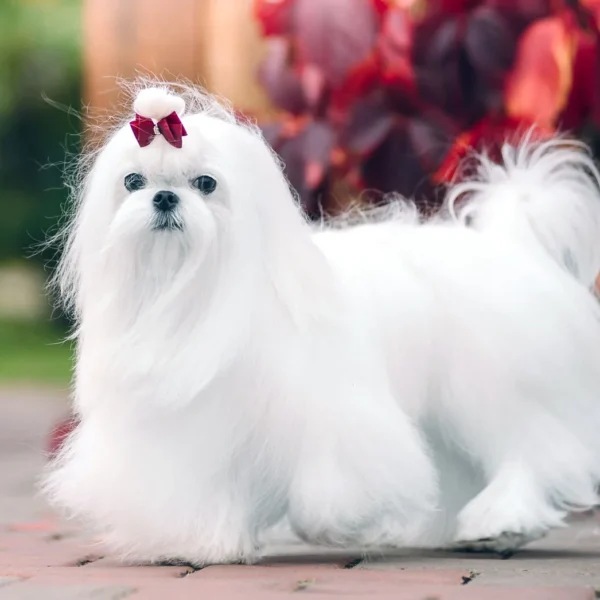
When it comes to lap-sized luxury, few dogs rival the elegance of the Maltese. With their silky white coats, graceful little frames, and undeniable charm, these pups are the very definition of captivating. But it’s not just their beauty that steals hearts — the Maltese is also known as one of the most affectionate breeds around, offering endless love and loyalty to their humans.
Originally from the sun-soaked shores of Malta, this breed has a rich history as a beloved companion to royalty and nobility. Pampered by aristocrats and admired for their delicate looks and sweet nature, the Maltese has been charming its way through the centuries — and hasn’t lost an ounce of that charm today.
But don’t be fooled by their dainty appearance — these pups are anything but passive lapdogs. The Maltese is bright, curious, and bursting with personality. They’re quick-witted little learners, often picking up tricks and commands with lightning speed. Beneath that glamorous coat lies a spark of intelligence and playfulness that makes them as fun as they are loving.
| Attribute | Details |
|---|---|
| Same As | |
| Breed Type / Mix | Purebred |
| Life Span | 12-15 yrs |
| Training | |
| Shedding | |
| Energy | Low Energy |
| Temperament | Affectionate, Calm, Friendly, Gentle, Lively |
| Adult Weight | 4-7 lbs |
| Adult Height | 9-10 in |
- Small but Mighty: Under 7 pounds and 7–9 inches tall, Maltese puppies combine petite size with a lively, spirited nature.
- Silken Coats: Known for their floor-length, silky white fur, their regal appearance requires regular grooming to maintain.
- Eternal Puppies: Retain a playful, youthful demeanor well into their senior years, bringing joy to their owners.
- Social Butterflies: Exceptionally friendly, they thrive on interaction with family, other pets, and even strangers.
- Loyal Companions: Form strong bonds with their families, enjoying snuggles and playtime alike.
- Intelligent and Trainable: Quick learners but occasionally stubborn, they respond well to consistent training.
- Energetic and Agile: Despite their size, they enjoy short walks, games, and mental stimulation, perfect for active owners

The Maltese is a picture of sophistication and charm, exuding an unmatched elegance with its flowing white coat and graceful demeanor. Despite their aristocratic appearance, these small dogs are sturdy, compact, and proportionally built, slightly longer than they are tall, which lends them a sense of balance and poise.
Classified as a toy breed, the Maltese typically weighs no more than 7 pounds and stands about 8 to 10 inches tall at the shoulder. For those who adore an even tinier companion, the teacup Maltese offers an ultra-compact variation, weighing under 6 pounds and small enough to fit comfortably in a purse. Both sizes pack a lively and affectionate personality, often described as “a lot of dog in a small package.”
The Maltese’s head is well-proportioned to its body, featuring a rounded skull, a medium-length muzzle, and a distinct black nose. Their round, dark brown or black eyes radiate intelligence and alertness, adding to their expressive and endearing demeanor. The breed’s low-set ears, adorned with silky hair, frame the face beautifully and enhance its regal appeal.
Their most distinctive feature is undoubtedly their coat. The Maltese sports a long, straight, and silky white coat, parted neatly down the middle and falling evenly on both sides of their body. Without an undercoat, this breed is known for minimal shedding and hypoallergenic qualities, making them a favored choice for allergy sufferers. The tail, carried gracefully over the back and covered in flowing hair, adds a plume-like finishing touch to their elegant silhouette.
The Maltese have captivated hearts for centuries with their exquisite appearance and delightful personalities. Their blend of charm, elegance, and affectionate nature has made them a favorite among royalty and everyday dog lovers alike—a breed that embodies timeless beauty and boundless love.
Maltese puppies carry themselves with a grace befitting their noble lineage, characterized by a gentle, affectionate nature and a dignified demeanor. Their adaptable personality and strong desire to please make them an excellent fit for a range of households, from singles to families.
One of the standout qualities of the Maltese is their unwavering loyalty. They form deep bonds with their owners, thriving on companionship and affection. However, this attachment can make them prone to separation anxiety, meaning they are happiest in homes where someone is often around.
Despite their small size, Maltese dogs are full of life, exuding a playful and energetic spirit. They bring vitality to any setting, always eager for games or engaging activities. Their fearlessness is another defining trait—whether facing larger dogs or unfamiliar situations, they display a bold and confident attitude.
Highly intelligent and eager to learn, Maltese dogs excel in training, particularly in obedience and agility. However, their occasional stubborn streak, especially during their younger years, calls for consistent and positive reinforcement. Gentle training methods paired with patience are most effective in helping this breed reach their full potential.
Maltese dogs generally coexist well with other pets and dogs, but their petite size necessitates careful supervision during play, particularly with larger animals. Their loving temperament makes them an excellent choice for families with children, though interactions with very young kids should be monitored to ensure the dog is handled gently and respectfully.
Though not naturally yappy, Maltese dogs are quick to alert their owners to perceived dangers, making them effective watchdogs. With early socialization and training, they can learn to minimize unnecessary barking, ensuring they remain pleasant companions in any environment.
The Maltese’s blend of loyalty, intelligence, and playful energy, wrapped in their signature white coat, makes them a beloved and versatile companion. Whether snuggling at home or enjoying a lively outing, they bring endless joy and love to their families, proving that their tiny size holds a truly immense heart.
Grooming
Maltese dogs are famous for their silky white coats, which require dedicated care to keep them looking pristine and healthy. Although their lack of an undercoat means less shedding, their single-layer coat demands consistent grooming to prevent tangles and maintain its beauty.
- Brushing: Daily brushing is essential for a Maltese. Use a slicker brush, working from the roots to the ends to avoid matting. For owners seeking a lower-maintenance option, the “puppy cut” keeps the coat short and manageable while giving the dog an adorable, youthful appearance.
- Bathing: Regular bathing is necessary to keep their white coat clean and shiny, typically every 2-4 weeks depending on their activity level. Always use a high-quality, gentle dog shampoo that protects their delicate skin and fur.
- Tear Stains: Maltese are prone to tear staining, which can discolor their coat around the eyes. Clean the area daily with a dog-specific wipe or a damp cloth to keep their face fresh and stain-free.
- Dental Care: Due to their susceptibility to dental issues, daily tooth brushing with canine toothpaste is crucial. Regular dental hygiene prevents tartar buildup and promotes overall health.
- Nail Trimming: Trim their nails every few weeks to prevent overgrowth, which can cause discomfort or difficulty walking. Use a proper dog nail clipper and maintain a calm environment during the process.
- Ear Care: Check their ears weekly for signs of infection, such as redness or an unpleasant odor. Clean them gently with a vet-approved ear solution to maintain ear health.
These grooming practices not only keep your Maltese looking their best but also provide bonding opportunities and ensure they feel their best, rewarding your care with love and companionship.
Exercise Needs
Maltese dogs are small but energetic, requiring moderate daily exercise to stay healthy and happy. Their playful nature and curiosity make them eager participants in various activities.
- Daily Walks: Two short walks of about 15-20 minutes each are sufficient to meet their exercise needs. These walks provide physical stimulation and satisfy their love for exploration.
- Playtime: Maltese thrive on interactive games like fetch, hide-and-seek, or toy chasing. Such activities keep them engaged and burn off excess energy.
- Dog Sports: Agile and intelligent, Maltese excel in obedience, agility, and rally sports. These activities combine mental stimulation with physical exercise, benefiting their overall well-being.
- Indoor Activities: On days when outdoor exercise isn’t feasible, indoor games and puzzle toys are great alternatives. These keep their active minds occupied and provide a fun outlet for energy.
While Maltese dogs love activity, they are also prone to overexertion. Always monitor for signs of fatigue, such as heavy panting or loss of interest, and ensure they get plenty of rest between bursts of energy.
Health
Maltese dogs are generally healthy but can be prone to specific conditions common among small breeds.
- Dental Problems: Crowded teeth in their small jaws make them susceptible to tartar buildup and gum disease. Daily brushing and regular veterinary cleanings are essential.
- Tear Staining: While primarily cosmetic, tear staining requires attention to keep their faces clean. Regular cleaning around the eyes can help manage this issue.
- Patellar Luxation: Like many toy breeds, Maltese can experience kneecap dislocation, causing discomfort or lameness. Maintaining a healthy weight and monitoring their activity can reduce the risk.
- Collapsed Trachea: Use a harness instead of a collar to prevent strain on their delicate necks, which can lead to breathing difficulties.
- Eye Conditions: Regular check-ups can catch and manage potential eye issues, ensuring their bright, expressive eyes remain healthy.
With proper care, many Maltese live long, healthy lives, averaging 12-15 years, with some reaching their late teens or early twenties. Good nutrition, regular exercise, routine vet visits, and attentive grooming contribute significantly to their longevity.
Training
Training a Maltese is both a rewarding and enjoyable experience, thanks to their intelligence and eagerness to please.
- Basic Obedience: Start early with simple commands like sit, stay, and come. Reward-based methods using treats and praise work best for this breed.
- Housebreaking: Potty training can be a challenge due to their small size, but consistency is key. A regular schedule and crate training can help establish good habits.
- Socialization: Expose your Maltese to various environments, people, and other animals from a young age. This builds their confidence and prevents fear-based behaviors.
- Positive Reinforcement: Maltese respond poorly to harsh methods. Gentle, consistent training with rewards encourages good behavior and fosters a strong bond.
- Mental Stimulation: Incorporate puzzle toys, tricks, and dog sports into their routine to keep their intelligent minds engaged.
Though small, Maltese have big personalities and occasional stubborn streaks. Patience, consistency, and a loving approach will help you raise a happy, well-behaved companion.
The Maltese breed boasts a history as distinguished and captivating as the dogs themselves, tracing its origins back to the ancient Mediterranean world. Known as the “Ye ancient dogge of Malta,” this breed is intricately tied to the island of Malta, where it was revered for its grace and endearing nature.
Ancient Beginnings
The Maltese were highly prized by the early inhabitants of Malta, but their allure soon transcended the island. Their pure white coats and affectionate demeanor captivated the aristocracy of ancient Greece, Rome, and Egypt. The breed was celebrated as a symbol of sophistication and luxury, often featured in artifacts and writings that underscored its esteemed status. Maltese dogs were cherished companions, with Roman noblewomen famously carrying them in their robes and poets and artists drawing inspiration from their elegance.
Expansion Across Europe
During the Middle Ages, the Maltese spread to England, where they once again won the hearts of royalty and nobility. Historical records suggest that Queen Elizabeth I, Mary Queen of Scots, and Queen Victoria all treasured Maltese dogs as companions. Their popularity as lapdogs and status symbols further solidified their reputation as a breed synonymous with refinement and charm.
Arrival in America
The Maltese arrived in the United States in the late 19th century, quickly gaining admiration for their striking appearance and affectionate nature. The American Kennel Club officially recognized the breed in 1888, and since then, their popularity has continued to grow. These small yet spirited dogs became beloved household pets, admired for their companionship and adaptability.
Designer Dog Era
In recent decades, the purebred Maltese has played a prominent role in the rise of designer dog breeds. Crossbreeding with other popular teacup breeds has given rise to a variety of hybrids, each retaining the Maltese’s trademark beauty and temperament while introducing new traits from the other parent breed. Some of the most popular Maltese crossbreeds include:
- Maltipoo: A mix of Maltese and Poodle, known for its intelligence and hypoallergenic coat.
- Malshi: A blend of Maltese and Shih Tzu, prized for its gentle disposition and fluffy appearance.
- Morkie: A Maltese and Yorkshire Terrier mix, combining playfulness with a touch of Terrier energy.
These hybrids have added new dimensions to the Maltese’s legacy, offering diverse options for dog lovers while preserving the breed’s elegance and charm.
Timeless Appeal
Today, the Maltese continues to enchant with the same qualities that made it a favorite in ancient times. Their flowing white coats, lively personalities, and affectionate nature have ensured their place as one of the most beloved companion breeds. Whether as a purebred or part of a designer mix, the Maltese remains a timeless symbol of grace, loyalty, and companionship, cherished by dog enthusiasts across the globe.
What exactly is a ‘Teacup Maltese’? Is it an official breed variation? No, the American Kennel Club (AKC) only recognizes one Maltese breed standard (under 7 pounds, ideally 4-6 pounds). ‘Teacup’ is an unofficial marketing term used by some breeders for Maltese bred to be significantly smaller than this standard, often under 4 pounds.
How much smaller is a ‘Teacup’ Maltese typically compared to the standard? While the standard aims for 4-6 pounds, puppies marketed as ‘teacups’ are usually advertised to mature at under 4 pounds, sometimes even as little as 2-3 pounds. Size can vary, and such extreme smallness carries major health risks.
Are Teacup Maltese prone to specific health issues due to their tiny size? Yes, significantly. They are at higher risk for hypoglycemia, fragile bones, open fontanels (soft spots on the skull), hydrocephalus, heart defects, liver shunts, collapsing trachea, respiratory problems, and severe dental issues in their miniature jaws.
Do Teacup Maltese have the same temperament as standard Maltese? They should ideally share the gentle, playful, and affectionate nature of the standard Maltese. However, their extreme fragility can make them prone to nervousness, fearfulness, or trembling if not handled with exceptional care. They can also develop “Small Dog Syndrome” if not properly trained.
Is grooming a Teacup Maltese different from grooming a standard Maltese? The coat care itself is the same: their long, white, single coat requires daily brushing to prevent mats and regular professional grooming. However, handling during grooming must be incredibly gentle due to their delicate structure. Tear stain management is also crucial.
How much exercise does a Teacup Maltese need? Very little structured exercise is required. Short, gentle indoor play sessions and perhaps very brief, careful walks on a harness (never a collar that pulls on the neck) are sufficient. Overexertion and rough play must be avoided.
Are Teacup Maltese particularly fragile? Yes, extremely so. Their bones are incredibly delicate and can break easily from falls (even off low furniture), being stepped on, or rough handling. They require a very protected environment.
What is the average lifespan of a Teacup Maltese? Unfortunately, due to the significant health problems often associated with breeding for extreme miniaturization, their lifespan is frequently shorter than the 12-15 years expected for a healthy, standard-sized Maltese.
How often should I feed a Teacup Maltese puppy? Frequent small meals are absolutely essential to prevent life-threatening hypoglycemia (low blood sugar). Young puppies may need feeding every 2-4 hours. Consult your vet for a specific feeding schedule and appropriate high-quality food.
Are Teacup Maltese good pets for families with young children? Generally, no. Their extreme fragility makes them unsuitable for homes with young children who might accidentally drop or handle them too roughly. They are better suited to adult-only homes or families with very gentle, older, supervised children.
Do Teacup Maltese bark a lot? Like many small companion breeds, Maltese can be prone to alert barking. Teacup versions are no different. Early training can help manage excessive barking.
How much does a Teacup Maltese puppy typically cost? Prices are often very high, frequently ranging from $2,500 to $6,000 or even more, due to the “designer” or “rare” marketing. This high cost does not guarantee health or ethical breeding practices.
Are Teacup Maltese difficult to house train? Very small breeds can sometimes be more challenging to house train due to their tiny bladders and the difficulty in detecting small accidents. Consistency, patience, and positive reinforcement are key, possibly combined with potty pad training.
Why do reputable Maltese breeders advise against ‘teacup’ sizes? Responsible breeders prioritize the health, longevity, and temperament of the breed according to the official standard. They understand the serious health complications and ethical concerns associated with deliberately breeding dogs below a healthy size threshold.
Are Teacup Maltese more prone to dental problems? Yes, fitting a full set of teeth into an abnormally small jaw often leads to severe overcrowding, misaligned bites, retained baby teeth, and a higher incidence of periodontal disease. Diligent dental hygiene is crucial from a young age.
Do Teacup Maltese suffer from tear staining like standard Maltese? Yes, tear staining is very common in Maltese due to facial structure and their white coat making it highly visible. Regular, gentle cleaning of the eye area is necessary to manage stains and prevent irritation.
Can Teacup Maltese travel easily? Their tiny size allows them to fit easily into carriers for travel, including in-cabin air travel. However, owners must ensure the dog is comfortable with travel and take precautions regarding their fragility and potential health sensitivities during transit.
What should I look for if considering a very small Maltese? Seek reputable breeders affiliated with the American Maltese Association (AMA) who health test their breeding dogs. Focus on finding a healthy puppy that happens to be naturally on the smaller end of the *standard* (e.g., closer to 4 lbs) rather than seeking out a breeder specifically advertising unhealthy “teacup” sizes.
Do Teacup Maltese get along well with other pets? With careful introductions and supervision, they can potentially live with other calm, gentle pets. However, interactions must always be monitored closely, as even playful larger pets could easily injure them accidentally.
Do Teacup Maltese have ‘open fontanels’? What does that mean? It’s relatively common in extremely miniaturized dogs. The fontanel is the soft spot on the top of the skull, similar to a human baby’s. In healthy dogs, it closes as they mature. An open fontanel in an adult or older puppy leaves the brain vulnerable to injury and can be associated with neurological issues like hydrocephalus.

